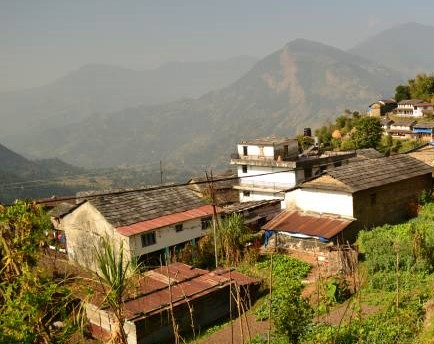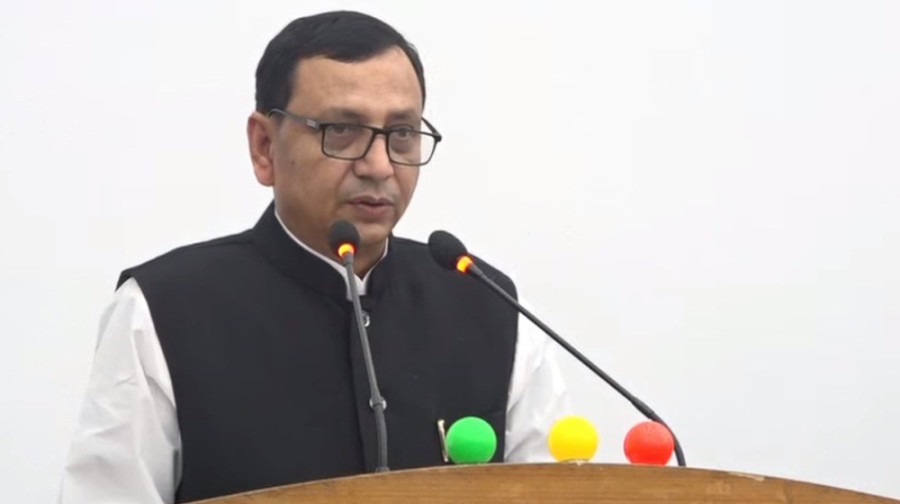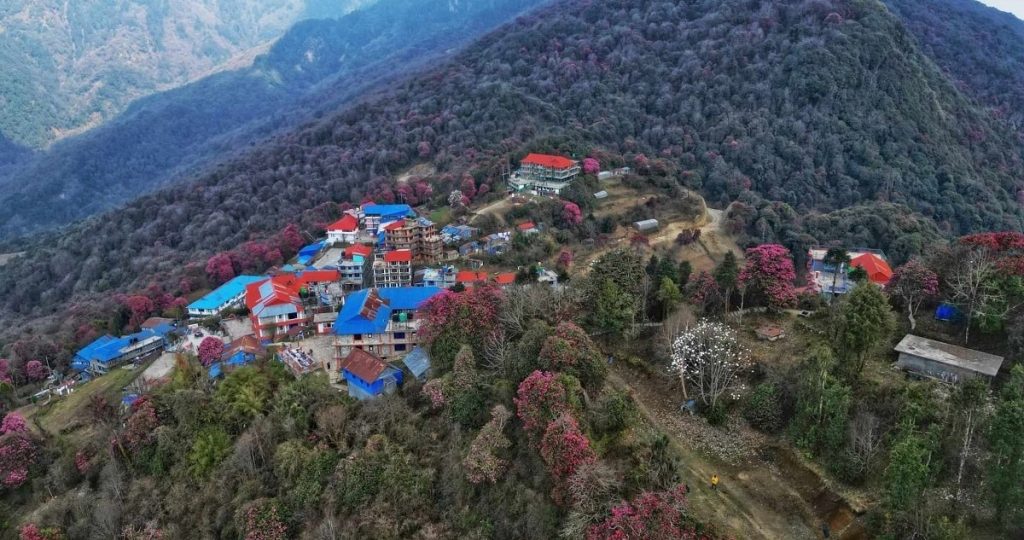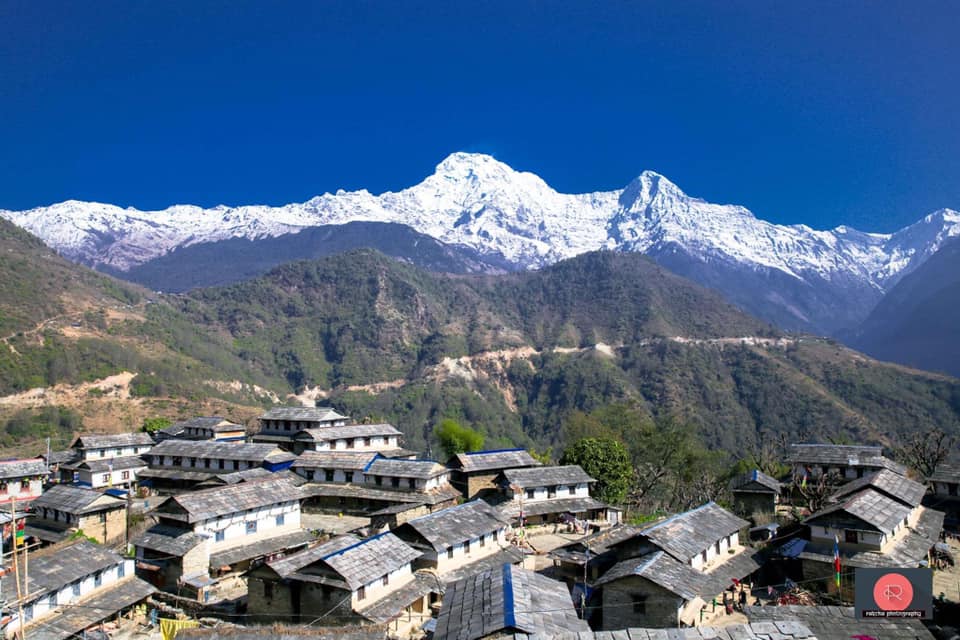Towards Sustainable Climate Resilient Tourism
- Ek Raj Sigdel/ Top Khatri


Nepal’s unique geography with remarkable changes in elevation from its lowland flood plains to snow capped mountain and associated variation in eco-climatic conditions has endowed the country with exceptional rich biodiversity. Despite its rich natural and cultural heritage, Nepal has not been able to market to its full potential. The tourism sector is vastly un-exploited and unexplored. The direct contribution of travel and tourism sector to GDP was 4.3% in 2014.
Nepal must market its aesthetic beauty, spectacular scenery and landscapes, rivers, lakes, mountains, wildlife, culture and heritage. Nepal’s comparative advantage lies broadly in four major sectors; agriculture, tourism, water resources and biodiversity. Tourism can become a sustainable source of income for Nepal so long as we protect our natural resources wisely from degradation and pollution. However, of late, the tourism sector has started to be impacted negatively by climate change.
Tourism in the face of climate change;
Nepal has experienced a consistent rise in temperature. In correlation with global warming trend, in between 1975 to 2006, the maximum temperature in Nepal has increased by 1.8 degree Celsius (DHM 2016). Likewise, the country has experienced less frequent but more intense rainfall, increasing the frequency of floods and growing intensity of glacial lake outburst floods. Nepal has lost 24% of its glaciated areas between 1977 to 2010 which has affected hydropower generation, drinking water supply, agriculture production and tourism assets.
Evidences of effects of climate change on mountain ecosystems are slowly emerging, especially in the context of natural hazards such as retreating glaciers; glacier induced flooding, landslides, drying out of water sources and avalanches. The once white snowcapped Himalayas are slowing getting denuded of snow and are exposed. Extreme events such as "Hudhud" in Annapurna region in 2012 resulted in the death of 60 people. Likewise, heavy monsoonal rainfall during 10-13 August 2017 triggered severe flash floods and landslides in 32 out of 75 districts. The floods and landslides claimed 141 lives, injured 117 persons, displaced 460,900 people, and left 24 missing. A large number of wildlife casualties occurred during this period, which is a major wildlife tourism destination in south Asia.
In view of the changing circumstances it becomes imperative that tourism business starts reorienting and planning better. This year’s world meteorological day’s slogan was weather ready, climate smart which is quite apt and timely. Weather forecast is crucial across all sectors but more crucial for aviation while naturally affects visitors travelling to Nepal. Hence, safety of visitors must become the priority for tourism business.
Nepal must bank on Quality tourism: Over the years, the tourism sector has become a larger contributor to national economy. However, when compared to south East Asian countries the figures are dismal. Contribution from Travel & Tourism sector to national GDP was 4.3% in 2014, which provides employment to 487,500 people (3.5% of total employment) in the country. Very recently, Minister of Tourism and Civil Aviation (MoCTCA) , Rabindra Adhikari has put forth an ambitious goal of doubling the number of visitors to 1.5 million by 2020. Furthermore, the Ministry aims to increase the numbers to 5 million by 2030. According to Nepal Tourism Statistics, 2016, of the total Nepal bound visitors, 52% pay visits to protected areas mainly national parks and conservation areas. The number of tourists in protected areas has also increased from 1, 65,304 in FY 2062/63 to 3, 89,223 in FY 2072/73.
Of the total protected areas bound tourists, almost 70% of them visit to mountain national parks and conservation areas mainly Sagarmatha, Annapurna, Shivapuri and Lang tang National Parks. According to the Nepal climate change vulnerability mapping for Nepal report 2010, these protected areas fall under high to moderate climate change vulnerability category mainly of GLOFs and landslides.
Eco-tourism in the Nepalese Himalayas, however, is highly vulnerable to climate change. Climate has a great role in influencing tourism demand and destination choice of holidays of tourists. Tourist will change their holiday destination from unpleasant weather to fine weather location. Climate induced hazards has taken lives of many tourists in the past. In the long term, climate change will have adverse impact on mountain/adventure tourism. Less snow in mountains and less greenery in the hills will decrease the scenic beauty of trekking routes. Local tourism entrepreneurs, whose livelihood is heavily reliant on tourism, will be badly affected.
GLOF and landslides are the key threats to mountain ecosystems and tourism infrastructures, mainly roads, trails, bridges, electricity, water supply, power houses, building, and others. Future tourism planning must adopt both climate change adaptation and mitigation measures to deal with the climate change issues in order to sustain the mountain tourism. In this connection, building further on the implementation of the Environment Friendly Local Governance Framework (EFLG) that comprises of multi-sectoral indicators including climate change mitigation, adaptation, and disaster could greatly help in promoting and safeguarding tourism business. Use of Initial Environmental Examination (IEE), Environment Impact Assessment (EIA), Disaster Risk Management Plan and Local Climate Change Plan of Actions could help in balancing environment and development agendas thereby creating a conducive environment to promote mountain tourism.
Further, as provisioned in the Local Governance Operationalization Act, 2017 capacity of local government units should be further strengthened for effective planning and management of tourism that takes into account of climate change issues and disaster risks. Tourism being a cross cutting business sphere, seeks for a multi sectoral coordination and collaboration across sectors. The existing planning approaches that stresses on sector based should be reviewed and an area based Tourism Master Plan should be developed catering the needs of the central and provincial level. Based on the master plan, sectoral plans and periodical plans need to be developed at local level. The local annual development plans should be formulated in line with the periodical plans to be coherent with the spirit of the master plan.
Conclusion
Climate change has impacted all sectors including tourism, a sustainable source of income for the country. Therefore, to ensure sustainable tourism development, it is imperative to develop climate resilient infrastructures and plan to be able to cope with the emerging climate induced hazards in the days to come. Realizing the urgency and importance of tourism as a sustainable source of income and employment, we need to shift from the current sector based approach to an area based approach with mainstreaming of climate change and disaster risk issues into development planning and budgeting process.





Feedback